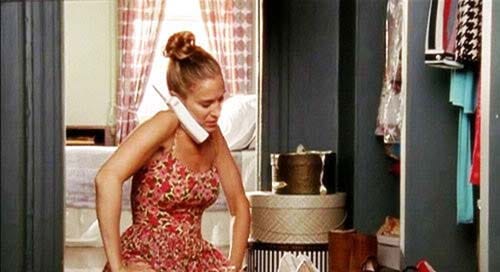style journal: lo-fi closet editing
closet editing for people with little time and limited emotional bandwidth
Over the past two years, I've been slowlyyy editing my closet. I've never done a full closet cleanout (i.e., taking every single item out ala Marie Kondo) because I find the thought completely overwhelming. As a mom of three, taking a full day or two to tackle my closet isn't realistic. What I have done, is carved out a couple hours on a Sunday afternoon, midweek, or post bed-time to address ONE category of clothes. It's been a slow process, but I'm finally at a point where almost everything in my closet has been touched and assessed. If like me, you prefer baby steps and quick wins, I thought it would be helpful to share some general tips for lo-fi closet editing!
Organize your clothes by categories. These are mine:
bottoms (jeans + pants)
sweaters and sweatshirts
dresses
blouses, blazers
skirts
casual tees and tops
I also organize them by colour in each category. Organizing your clothes into categories will make getting dressed much easier in the morning. It'll also simplify the editing process when you have the time. You can categorize as you edit or separately over days and weeks, five to ten minutes at a time.
Carve out time to edit one category or sub-category at a time. Examples of sub-categories are work pants, jeans, formal dresses, t-shirts, or swimwear. Going through an entire category or sub-category could take 30 minutes to 2 hours, depending on the number of clothes you have in each category.
Make sure to think about how much time you have before you start so you don't crash out halfway through.
You don't need to take everything out of your closet. If taking all your clothes from one category out of your closet gives you anxiety, don't! You can edit by simply pulling out one piece at a time and seeing how you feel about it. If it's a full-body-yes, it goes back into the closet. If you're unsure, try it on.
Trying on clothing will help you understand what's going on with a piece. If it's a no, it goes in a donation pile; if it needs to be tailored or professionally cleaned, put it in a separate pile*. If it's a "how," meaning you're unsure how to style it (Allison Bornstein's method), consider a few ways to wear it and then put it back. If it doesn't currently fit you, store it in a separate place.
*Put the pile of clothes that needs repairing or dry cleaning into a bag and place it by your front door. Even if it sits there for a month, eventually you'll stop ignoring it and drop it off where it needs to go.
Case study: The other day, I went through a drawer of tights/pantyhose that have been taunting me for a year. I had about 15 pairs, accumulated over 15 years, and I only wore two pairs. I was dreading the task, but the whole thing took me about 30 minutes. I forced myself to try on each pair (so annoying) but trying each pair on made me realize why I didn't wear the majority of them - itchy, too tight, too small, tears down the thigh, tears on the toes, and so on. In the end, I kept four pairs and let the rest go. Liberating.
A few reasons an item of clothing could be a no:
It's in poor condition.
It's no longer your style.
You don't like the fit.
It doesn't fit.
You have something similar and prefer the other piece.
You haven't worn it in years and can't see yourself wearing it again.
Re-organize what you've decided to keep. Reorganizing might look like refolding, changing hangers, and colour coding. This last bit of tidying makes that area of your closet (or drawer, or shelf) look appealing when you want to access it. Consider what would make it easier to get dressed and organize accordingly.
I hope this quickie, lo-fi closet editing guide was helpful. There are phases of life when we have more energy and phases where we have less, but that doesn't mean accepting closet chaos. Tackling one pile or one category adds up after a while. I've taught myself to do it in this stage of life to still feel good about my clothes. It works, and if you're low on energy, time, or will, give it a go!
These closet editing tips are by no means exhaustive, so please share any additional suggestions you may have, and share this post with a friend who may mind it helpful. And as always, a heart means a lot if you enjoyed this read.




